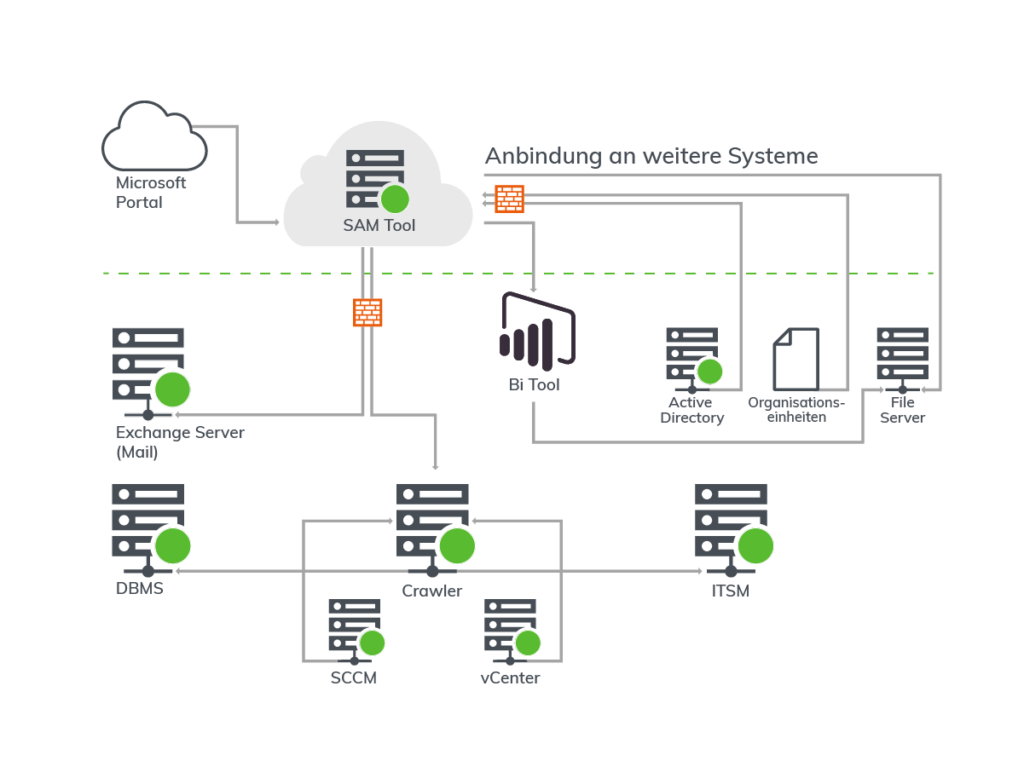If such an instance has not yet been in place in your company, awareness is already raised at this point that the managing director is always fully responsible and liable for ensuring that his company is sufficiently licensed. Because whether the software was purchased with the payment of a one-off amount, a rental model is behind it that entails annually recurring operational costs or it is merely a cloud-based usage agreement, the lifecycle and the compliance obligation begin right at this moment.
In addition, the company often also commits to a software maintenance contract, which includes individual services and the permanent installation of updates and upgrades, as well as other costs.
Grown over a period of only one year, a zoo of software products and applications comes together that can no longer be managed seriously at this stage.
Establishing licence management in the company
This corporate responsibility makes it advisable to install a licence management awareness that handles the procurement of software, checks licence conditions, monitors costs and manages licensing metrics.
The intensity with which this function is established and carried out can vary from company to company.
For small companies with manageable clients and software products, a uniform procurement process and regular reporting of costs and a software overview with the purchased licence quantities in constant comparison to the required number is recommended – keyword licence balance.
Things get more interesting for medium-sized companies, where it is worth taking a closer look behind the scenes in addition to monetary asset and contract management.
In particular, individual usage behaviour, licence pooling within the company and the right choice of licensing metrics, which are sometimes offered in very different ways, can already have a considerable impact on the profitability and flexibility of the entire organisation.
However, this requires far more extensive processes already during deployment, i.e. software distribution and allocation. At this point, licence keys supplied with the software must be clearly assigned to users or devices in order to be able to carry out so-called “metering”. Software metering thus provides all information about the usage behaviour of the respective programmes and thus forms the basis for the analysis of all usage data including the inventory.
Support through the use of software asset management tools
Professional management with the help of a software asset management tool (SAM tool) is also of interest to small and medium-sized enterprises and is almost indispensable for large companies and corporate groups.
Here there are a large number of established manufacturers (see Gartner Quadrant)
Gartner Magic Quadrant for Software Asset Management Tools (2019)
Careful technical fine-tuning to the respective needs, as well as putting the tool through its paces during a proof of concept, are fundamental prerequisites here.
In addition to the usual economic and technical factors, it is also important to think outside the box when making a decision. Project planning and implementation by the manufacturer often show deficiencies in support during the migration of data from legacy systems. The standard manufacturer catalogues stored in the tool, including the preset metrics, constitute a special quality feature and the product roadmap of the next releases should also be given decisive consideration.
The aim is to establish a long-term and, above all, partnership-based business relationship with the manufacturer.
Automatically generated (optionally also daily) inventory analyses, taking into account the manufacturer’s licence metrics, enable the licence manager to react ad hoc and to distribute licences elsewhere.
- distribute existing licences
- cancel
- reorder
- change metric models
This tool also makes it much easier for the licence manager to determine the true-up reports required by some software manufacturers, i.e. changes in volume during a billing period.
The following picture illustrates the versatile interfaces to other tools, servers and databases that have to be established and stabilised.
Overview of the interfaces of the Software Asset Management Tool
Bi-directional data streams enable reliability and security in terms of “compliance” and the resilience of figures, reports and analyses from the SAM tool and provide a perfect basis for preparing for a smooth supplier audit.
Conclusion
Whichever way your company chooses to deal with the topic of license management, the bottom line is to keep sensitivity and attention high in order to comply with licensing at all times and to always be in a position to make economic decisions in this environment.



